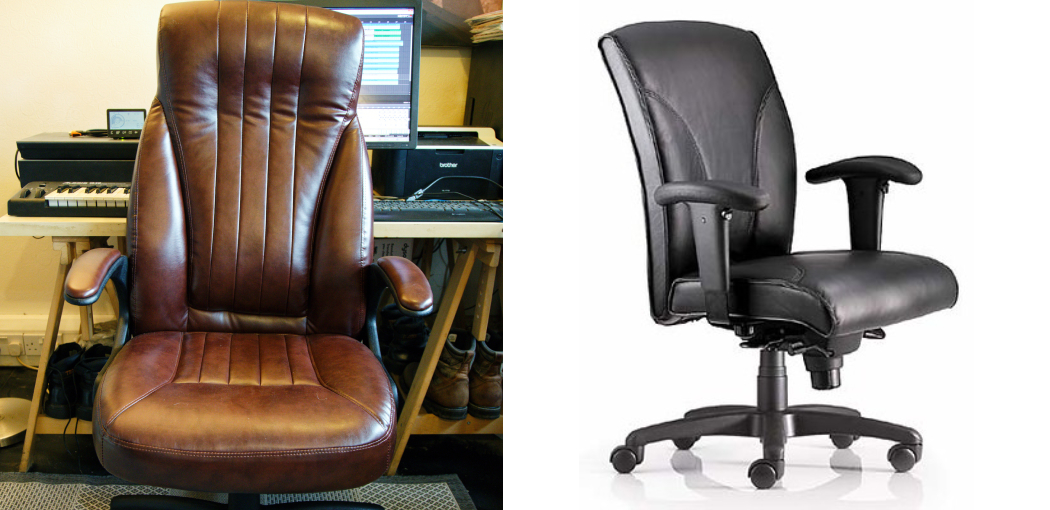If you have an office chair with leather upholstery, you may notice that the leather is peeling. This can be a big annoyance, making your chair look old and tattered. However, there is a way to fix this problem. Today in this article, we will teach you how to fix peeling leather office chair. Keep reading for more information.
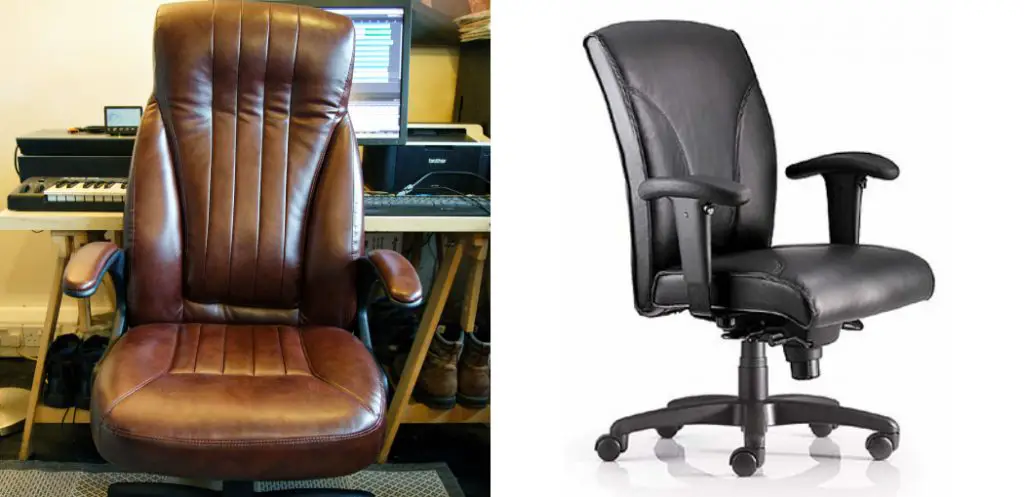
We all know how expensive office chairs can be. That is why it is essential to take care of them to last longer. If you do not take care of your chair, the leather will start to peel and crack. This looks very unsightly and can make your chair uncomfortable to sit in. Unfortunately, many people do not realize that there are ways to prevent this from happening.
Why Is My Leather Office Chair Peeling?
The main reason leather office chairs peel is because the surface hasn’t been adequately cared for. Like your skin, leather needs to be moisturized to stay supple and prevent cracking. When it cracks, it’s more susceptible to peeling. Other reasons include:
– Exposure to sunlight – this dries out the leather and causes it to crack and peel
– Wearing shoes while sitting on the chair – this rubs dirt and debris into the leather, causing it to wear down prematurely
– Spills – if the liquid isn’t cleaned up quickly, it can seep into the pores of the leather and cause it to peel
If you’ve noticed your leather office chair starting to peel, don’t panic! There are a few things you can do to fix it.
What Are the Different Types of Leather?
Leather is a material that is made from the skin of an animal. The skin is treated with chemicals and then tanned to preserve it. Leather is used in various products, including clothing, shoes, furniture, and automobile upholstery. There are many different types of leather, each with its unique characteristics.
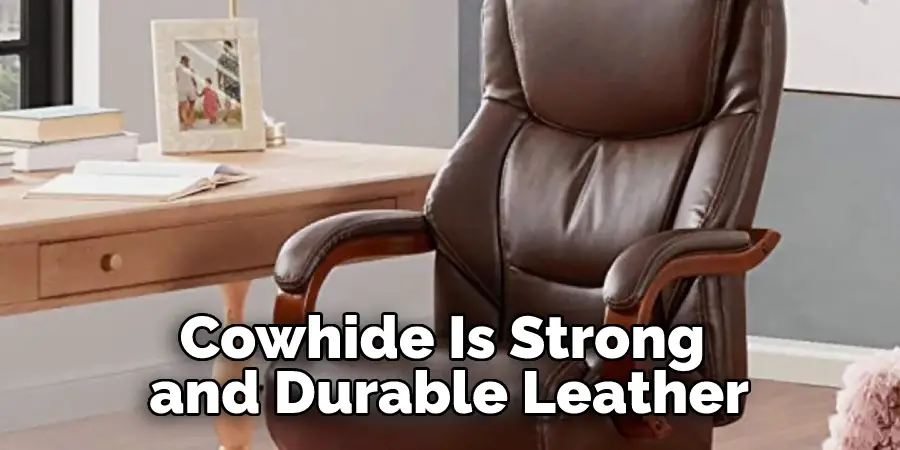
The most common type of leather is cowhide. Cowhide is strong and durable, making it ideal for heavy use products, such as furniture upholstery or work gloves. It is also relatively easy to care for, as it can be wiped clean with a damp cloth. Another popular type of leather is pigskin. Pigskin is similar to cowhide in durability and ease of care, but it is typically softer and more pliable.
Leather can also be made from the skin of other animals, such as goats, sheep, and deer. These types of leather are often used in high-end products, such as designer handbags, as they are considered more luxurious than cowhide or pigskin.
Faux leather is a synthetic material that is made to look like leather. It is usually made from polyurethane, which is a type of plastic. Faux leather is often used in products designed to look like leather but does not need the same durability, such as wallets and purses.
A Step By Step Guide on How to Fix Peeling Leather Office Chair
Step 1: Determine the cause of the peeling.
The first step is to determine the cause of the peeling. If the chair is new and the leather is peeling, it is likely a manufacturing defect, and you should contact the company for a replacement or refund. If the chair is old and the leather is peeling, it is likely due to wear and tear.
Step 2: Gather your materials.
You will need the following materials:
– Leather repair kit
– Cleaning supplies
– Sandpaper (optional)
Step 3: Clean the Area
Before you start anything, it’s essential to clean the area where the peeling is happening. This will help ensure that the adhesive will stick correctly and that the repair will be as undetectable as possible.
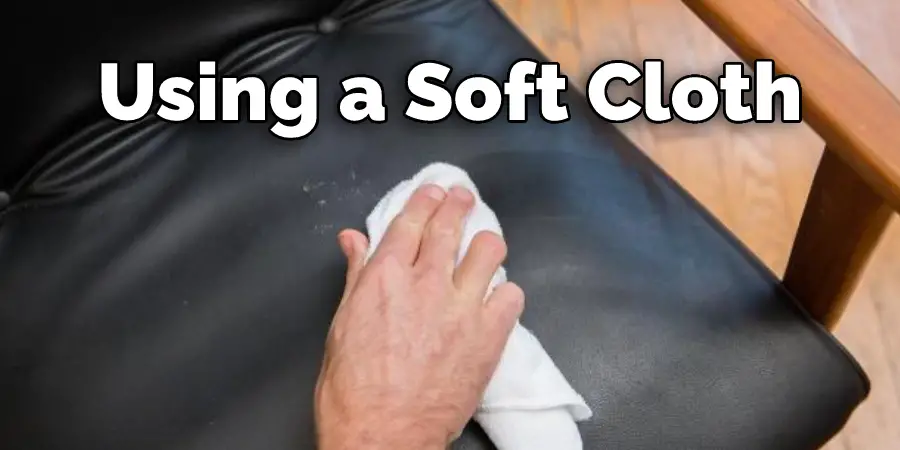
Start by using a soft cloth to wipe away any dirt, dust, or debris from the peeling area. If there is any grease or oil on the leather, you’ll want to remove that. Once the area is clean, allow it to dry completely.
If you’re working with a large area of peeling leather, you may want to use a vacuum cleaner with a soft brush attachment to remove any loose particles gently. Be careful not to damage the leather while you’re doing this.
Step 4: Rough up the Area.
If the adhesive is not sticking correctly, the leather will continue to peel. To help ensure that the adhesive sticks, you’ll need to rough up the area where the leather is peeling.
You can do this with sandpaper or a wire brush. Just be sure not to damage the leather any more than necessary. Once roughed up the area, wipe away any dust or debris with a soft cloth.
Step 5: Apply the Adhesive.
Now it’s time to apply the adhesive. You’ll want to follow the instructions on your particular repair kit, but in general, you’ll want to use a thin layer of adhesive to the area where the leather is peeling.
Be sure to work quickly, as most adhesives will start to set within a few minutes. If you’re working with a large area, you may want to apply the adhesive in sections to avoid drying before you’re finished.
Step 6: Press the leather back into place.
Once the adhesive is applied, you’ll need to press the leather back into place. Use a soft cloth to smooth out any wrinkles or bubbles.
If the leather is peeling in more than one spot, you may need to use something like a weights or a heavy book to help keep the leather in place while the adhesive dries.
Step 7: Allow the Adhesive to Dry.
Now all you have to do is wait for the adhesive to dry. This usually takes anywhere from 24 to 48 hours. Once the adhesive is dry, you can use your chair as usual.
If the leather is still peeling after you’ve followed all of these steps, it’s possible that the leather is too damaged and will need to be replaced. You can find replacement leather online or at a local upholstery shop.
Step 8: Apply Leather Paint
If the peeling leather is noticeable, you may want to cover it with leather paint. This will help match the color of the leather and make the repair less noticeable.
Start by mixing the paint according to the instructions on the bottle. Then, use a small brush to apply the paint to the area where the leather is peeling. Allow the paint to dry completely before using the chair.
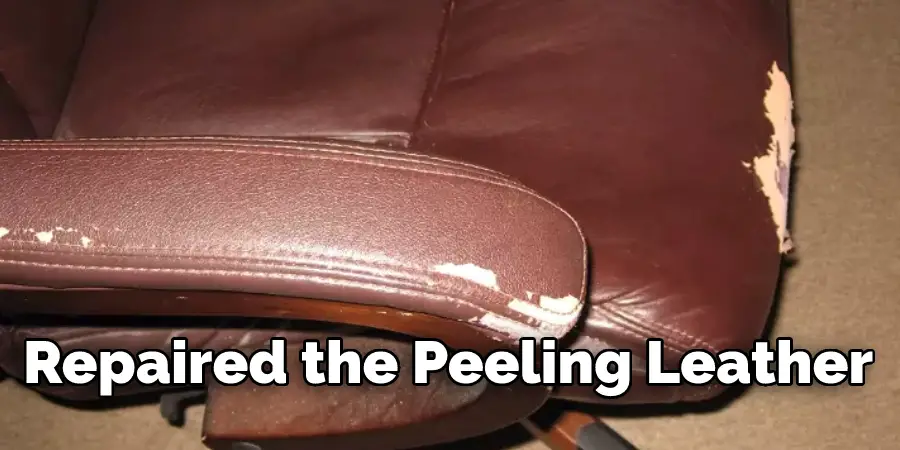
Step 9: Add a Leather Protector
Once you’ve repaired the peeling leather, you’ll want to add a layer of protection to help prevent it from happening again. You can do this with a leather protector spray or cream.
Follow the instructions on the product and apply it evenly over the surface of the leather. This will help create a barrier between the leather and any dirt or debris that could cause it to peel.
By following these steps on how to fix peeling leather office chair, you can quickly fix peeling leather on your office chair. Just be sure to work promptly and carefully to avoid further damaging the leather. With time and effort, you’ll have your chair looking new!
Tips and Warnings:
Tips:
– If your leather office chair is peeling and you want to fix it, there are a few things you can do.
– First, try using a leather conditioner or moisturizer. This will help to rehydrate the leather and make it more supple.
– If this doesn’t work, you may need to use a leather repair kit. These kits have everything you need to patch up small holes or tears in the leather.
– For more severe damage, you may need to take the chair to a professional for repairs.
Warnings:
– Do not use any harsh chemicals or abrasives on your leather chair, as this could damage it further.
– If you are not sure how to fix your chair, it is always best to consult a professional. This will ensure that the repairs are done correctly and that your chair is not further damaged.
What Kind of Leather Does Not Peel?
Given the wide variety of leather products on the market, it is not surprising that there is also a wide range of leather types. Each type of leather has its advantages and disadvantages, and as a result, some types are better suited for specific applications than others.

One common concern when purchasing leather goods is that the leather will peel or flake over time. However, certain types of leather are naturally more resistant to peeling and flaking. Full-grain leather, for example, is taken from the outermost layer of the hide, which is the most robust and most durable part. As a result, full-grain leather is less likely to peel or flake than other types of leather. However, it should be noted that even full-grain leather can peel or flake if it is not adequately cared for.
Top grain leather is another type of leather that is less likely to peel or flake. Top grain leather is made from the second-highest layer of the hide, just below the full-grain layer. This hide layer is thinner and softer than the full-grain layer, but it is still strong and durable. As a result, top grain leather is less likely to peel or flake than other types of leather. However, top-grain leather can still peel or flake if not correctly cared for, like full-grain leather.
Bonded leather is a type of leather made from bits and pieces of lower-quality leather that have been glued or bonded together. As a result, bonded leather is not as strong or durable as full-grain or top-grain leather, and it is more likely to peel or flake over time.
So, if you are looking for a type of leather that is less likely to peel or flake, you should look for full-grain or top-grain leather. However, even these types of leather can peel or flake if they are not properly cared for.
Conclusion:
Leather office chairs are a popular choice for their style and comfort. However, over time the leather can start to peel. This guide will show you how to fix peeling leather office chairs using simple tools and techniques. Follow these steps, and your chair will be looking good as new in no time!
You may read also How to Stop Office Chair Damaging Carpet

